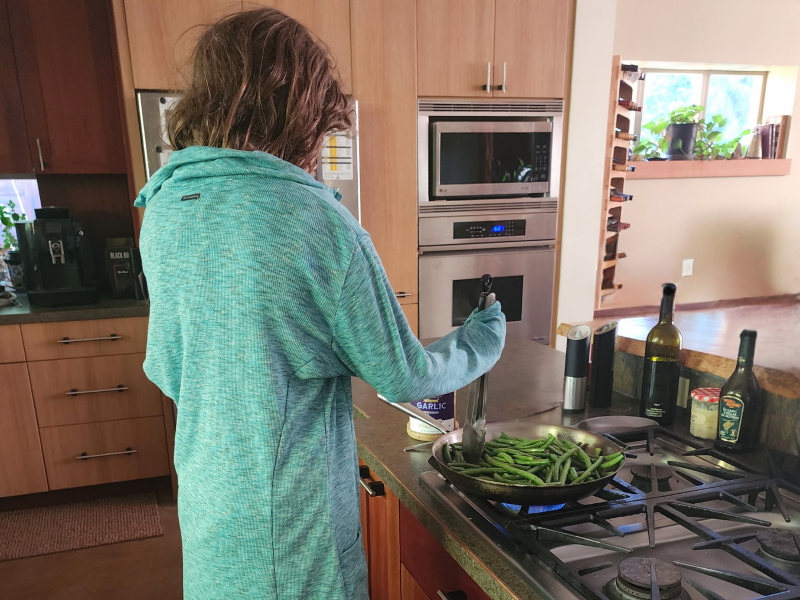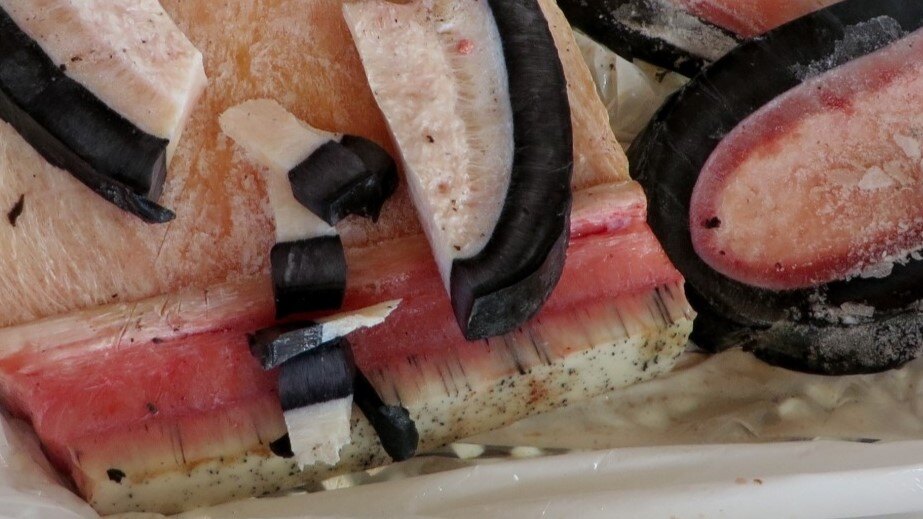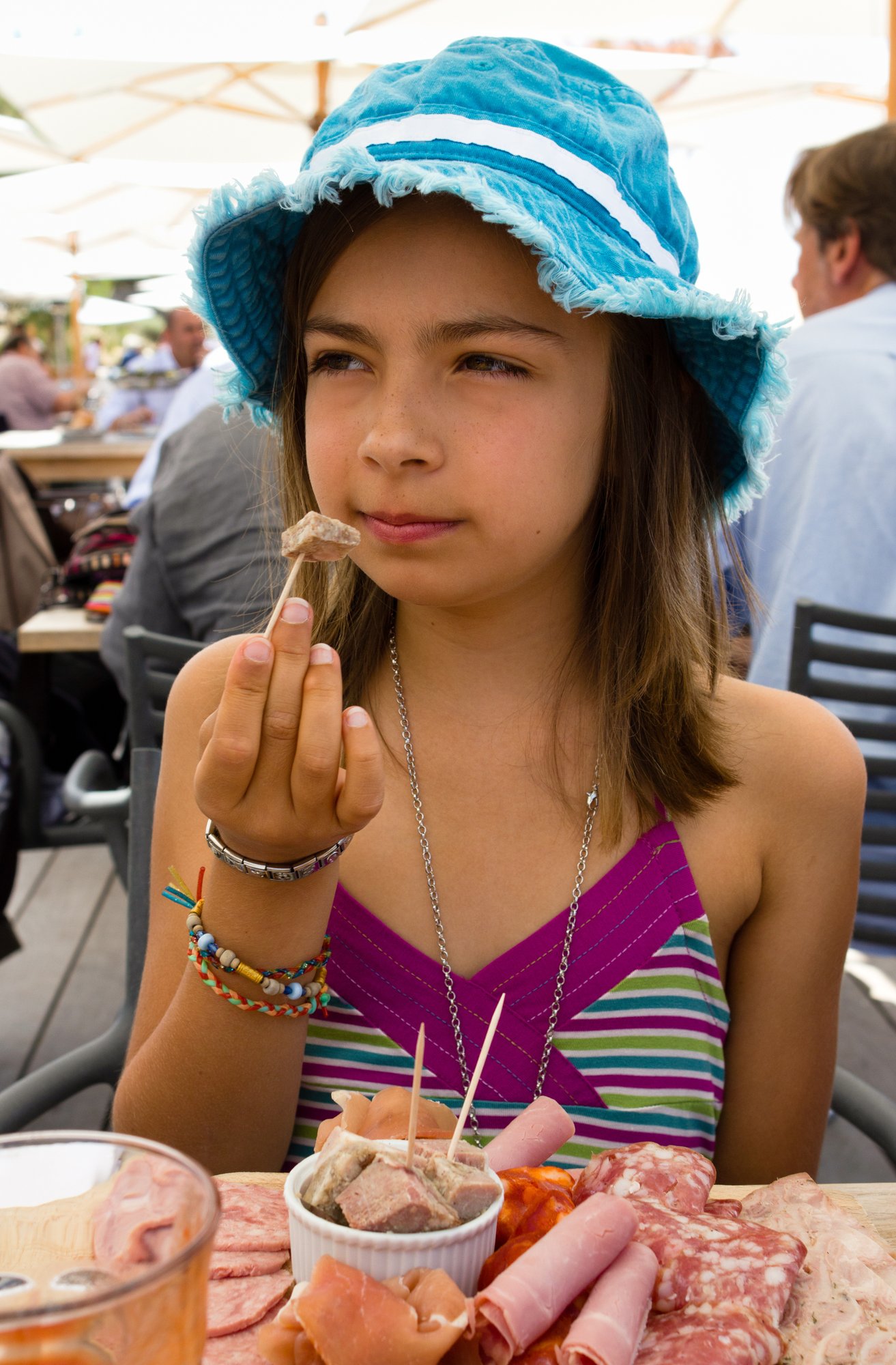Raising Healthy Eaters
As a busy mom or dad, you’re juggling a million things at once—work, school routines, after-school activities, and everything in between. It’s easy to reach for the quickest, most convenient food options just to keep everyone fed and moving. Yet, within the ordinary act of preparing meals lies the extraordinary opportunity to shape young lives, to set in motion habits and tastes that will carry them through the seasons of life. It’s a dance as old as humanity itself. Have you ever wondered how the choices we make now can shape our kids’ eating habits for the rest of their lives?

Getting kids involved in meal prep is a great way to keep them connected to the family, and it also helps them develop healthy eating habits. This is particularly important now, as we head into the back-to-school season and routines get even busier. But it can be a challenge, especially when you’re battling picky eaters or trying to move away from the sugary, processed foods that seem to be everywhere. Having kids ranging from 10 to 30, I have some experience with this battle.
Why Our Food Choices Matter
As parents, we have the power to set our kids on a path to healthier eating. It’s not just about avoiding processed foods; it’s about creating a positive relationship with real, whole foods that can last a lifetime. The foods we’re exposed to growing up often become our comfort foods—whether that’s pizza, sugary snacks, or the dried fish some cultures grow up eating.
I’ve traveled to many parts of the world and have seen firsthand how deeply our food habits are rooted in what we grew up eating. For example, I was once up in the icy fringes of the Arctic Ocean, where the local diet is rich in seafood and fatty meats. To me, the dried fish and whale blubber they loved was unappealing (read gross), but for them, it’s comfort food because that’s what they’ve always known. Similarly, I found myself struggling with the flavors of authentic Chinese cuisine, despite thinking I had a diverse palate from growing up in the U.S., Europe, and the Middle East. Going down to breakfast each morning, I found some of the smells and tastes… well, unappealing. It was a reminder that we are all creatures of habit and familiarity.

In America, the abundance of processed, sugary foods has shifted what we consider “normal.” And if we raise our kids on these foods, that’s what they’ll crave and reach for, often for the rest of their lives. These foods are engineered to hit certain pleasure sensors in the brain. Of course they are yummy. Offering something outside that is going to take patience. But just because they might not like something new at first doesn’t mean they won’t learn to enjoy it over time. It’s all about consistent exposure and keeping an open mind. My mom used to do this with eggplant, “oh, but you love eggplant” she would say. Mom, I have never loved eggplant.
The Hidden Costs of Processed Foods
Processed foods are everywhere, and they’re designed to be convenient, affordable, and most importantly, highly palatable. But many of these foods come with a hidden cost to our health. In the U.S., where processed foods are a staple in many households, we’re seeing record levels of chronic disease and obesity—especially among children.
You might have even heard that meat is bad for the evnironment so we need to go plant based which ends up being mostly processed food. Click the image below if you want to go a little deeper into that world.
These foods are often made with ingredients like seed oils, refined flours, and various forms of sugar, such as high fructose corn syrup. They’re engineered to make us want more, and the advertising budgets behind them are astronomical (i.e. their marketing is top-notch).
PepsiCo alone spends over a billion dollars a year on advertising, much of it aimed directly at kids. Meanwhile, the advertising budget for the ENTIRE meat and dairy industry is around $750 million. It’s no wonder our kids are bombarded with messages pushing them towards junk food at every turn.

Industrial food production
You don’t have to look far to see the impact. Just glance at the average kids' menu at a restaurant, and you’ll likely find chicken nuggets, fries, and sugary drinks. These menus cater to what kids are used to and often *contribute* to picky eating habits. Many families end up making separate meals for their kids because it’s easier in the moment—but it creates a host of long-term challenges. The more we cater to their preferences for processed foods, the more they expect it, and the harder it becomes to introduce healthier options.
How to Encourage Healthier Eating Habits
So, what can we do as parents to set our kids up for a healthier future? Here are some strategies that can help, based on our family and my own experiences (did I mention yet, we have kids ranging from ages 10 to 30 AND our oldest did her thesis on picky eaters from an anthropological perspective?):
- Lead by Example: Our kids watch everything we do, including what we eat. By making healthier food choices ourselves, we set a powerful example. This can be challenging, especially when you’re exhausted and just need something quick. But every small step counts.
- Involve Them in Meal Prep: Getting your kids involved in the kitchen can be a game-changer. It doesn’t have to be complicated—they can help wash vegetables, stir ingredients, or set the table. When kids participate in meal prep, they’re more likely to try the foods they’ve helped make.
- Limit Highly Palatable Foods at Home: One of the simplest ways to encourage healthier eating is to control what’s available at home. If they’re not there, your kids can’t eat them! Instead, stock your pantry with whole foods like fresh fruits, nuts, cheeses, and various meats. It’s not about being perfect—just make these healthier options the norm rather than the exception.
- Make One Meal for Everyone: Resist the urge to make separate meals for the kids and the adults. Serve one meal for the whole family, and let your kids decide if they want to eat it. If they’re hungry, they will eat. If not, they’ll learn that it’s okay to not like everything right away. This approach also teaches them flexibility and reduces the likelihood of becoming a picky eater.
- Stay Strong in the Face of Food Battles: It’s natural to want to cater to your kids, especially when they’re resistant to trying something new. I remember when my oldest son choked on chicken when he was four, and he refused to eat anything solid for days. Instead of giving in and offering only soft foods, we served our regular meals. After a couple of days, hunger won out, and he resumed eating normally without any lasting issues. This experience taught me that sometimes, you have to be patient and let them come around on their own.
- Teach Them About Food Choices: As they get older, involve your kids in making choices about what to eat. Educate them on why some foods are better than others, not in a way that’s scary or overwhelming, but as a part of learning how to take care of their bodies. It’s empowering for them to understand that what they eat impacts how they feel and grow.
The Bigger Picture: Creating a Healthier Future
We can’t control everything our kids eat, especially as they get older and are exposed to the world outside our homes. But we can lay a strong foundation that they can carry with them. Think of it as setting the stage for lifelong healthy habits. The goal isn’t to completely eliminate processed foods—that’s unrealistic in today’s world—but to tip the balance in favor of whole, nourishing foods.
Remember, the journey to healthier eating is a marathon, not a sprint. There will be ups and downs, and that’s okay. Every small step you take towards reducing processed foods and increasing whole foods in your home makes a difference. Your kids might not thank you now, but one day, they’ll appreciate the foundation you’ve set for them (trust me, they do.... eventually).
In the end, it’s not just about food—it’s about family, connection, and teaching our kids the value of taking care of themselves. So, take a deep breath, give yourself grace, and know that you’re doing an amazing job. You’re setting the stage for a healthier, happier future for your family, one meal at a time.

In our homes, away from the bright lights of advertising and the pressures of convenience, we have the chance to set things right. We can turn the tide, one meal at a time, by filling our kitchens with foods that come from the earth and the sea, not from a factory. It’s about more than just food; it’s about connection, about teaching our children that they are worth the time and effort it takes to prepare a meal that truly feeds them.






















Comments